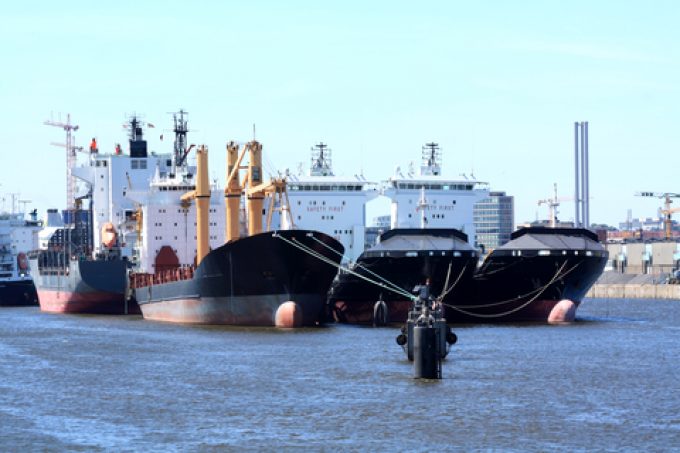Threat of rising oil price adds to frustration for crisis-hit supply chain chiefs
New warnings from the World Bank of surging oil prices, adding to the continuing instability ...

The liner industry is set for a potential spike in idled containerships this winter, as the blanking and sliding strategies of ocean carriers is replaced by the widespread lay-up of surplus tonnage.
The adoption of longer-term “winter schedules” by carriers is seen as a more stabilising capacity management tool than seemingly ad-hoc blanking programmes. Carriers will be able to temporarily rejig their networks and idle ships not required.
And the delivery of yet more 24,000 teu ultra-large container vessels (ULCVs) could not come at a worse time for a liner industry already struggling with an oversupply crisis.
For example, MSC has so far received two 24,000 teu ULCVs this month, both of which have finished their sea trials only to go to anchor for an indefinite period.
Another 190,000 teu of newbuild tonnage left Asian shipyards last month and, allowing for slippages, there is an estimated 2m teu more likely to be delivered by the end of next March.
Even during a period of healthy demand, ocean carrier ship managers would have found the deployment of the constant stream of newbuild ULCV tonnage challenging, but with the prospect of a weaker than normal slack season across many trades, the extra slots on the larger ships have ramped up the pressure on ship operation teams.
The aspiration is to deploy mainly 20,000-24,000 teu ULCVs on Asia to North Europe loops, in order to have the lowest possible unit cost (with a sense of ego thrown in), but that means redeploying incumbent ships and the cascading options for 18,000 teu vessels is now virtually non-existent, following the downturn in demand on transpacific and Asia-Mediterranean trades.
“We’re running out of options for the big ships,” a carrier executive told The Loadstar on the sidelines of a recent London shipbroking event.
“I think we are going to have to start laying-up some ships soon. They can’t go much slower, and blanking them or sliding them week after week is getting very confusing, not only for the customers, but also for our internal schedules,” he explained.
Meanwhile, a UK-based NVOCC contact told The Loadstar last week he “welcomed the clarity” of the 2M Alliance’s announcement of an Asia-North Europe “winter schedule”.
MSC and Maersk gave customers notice of seven consecutive weekly cancellations of a loop, through to December, which they attributed to “slowing demand”.
It is perhaps too early to establish a formal link, but the unambiguous capacity management decision by the 2M partners, and some of their peers, may have helped ease the downward pressure on spot rates on the route, with the Ningbo Containerized Freight Index reporting on Friday that space for North Europe was “becoming tight”, and that spot rates were “trending up”.
Listen to this clip of analyst Lars Jensen talking to The Loadstar Podcast about how container lines are heading into ‘red’ territory in Q4.
Comment on this article